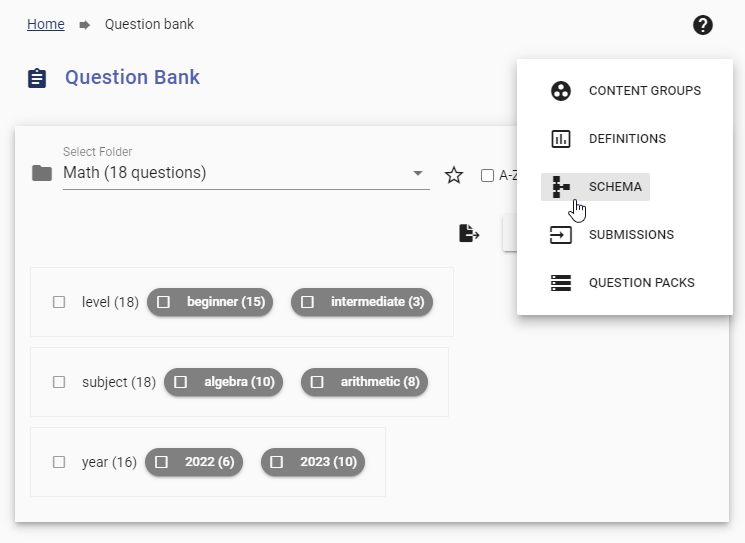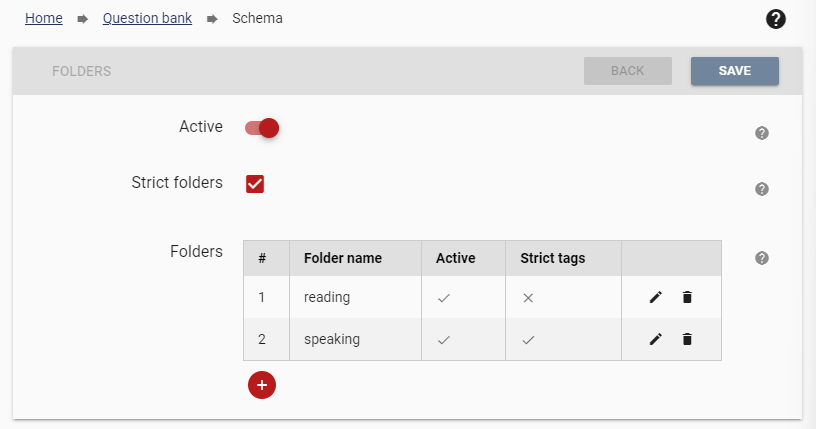All Resources
Question bank schema helps you organize and regulate your question bank for a structured and efficient system.
Before diving into the topic of a question bank schema and its applications, let's begin by addressing the most fundamental questions.
Testinvite's Question Bank is highly flexible and allows you to create folders and tags on-the-go, without the need for pre-definition. Simply enter the name of a new folder or tag and the Question Bank will automatically create it for you. This gives you the ability to organize your questions as you see fit, in real-time, without any limitations or restrictions. You can place a question in a folder by simply writing the folder name and the Question Bank will automatically create the folder for you. The same process applies for tags, and you can create and assign tags to questions at any time without pre-defining them.
This method is well-suited for small teams or organizations that don't maintain a vast collection of questions, as it eliminates the requirement for time-intensive setup, resulting in a more flexible and spontaneous work environment. However, when collaborating with a larger team or managing a question bank that contains a significant number of questions, having established guidelines can be advantageous. Here is where the question bank schema comes in handy. It assists in organizing and standardizing your question bank, creating a structured and efficient system.
A schema enables you to pre-establish folders and the available tags for each folder. The schema can be highly restrictive, meaning only the pre-defined values can be utilized, or you can take a more flexible approach by pre-defining folders and tags, but not enforcing their usage. Implementing a schema can aid in avoiding errors when assigning folders and tags to a question, as the schema may impose guidelines.
To access the schema editor, navigate to your question bank, click on the menu icon located at the top-right corner of the page, and choose "Schema" from the available options.

The Question Bank Schema enables the definition of folders and their associated tags, as well as the permissible values for each tag. Once the schema is established, the system enforces compliance with the schema among all users of the Question Bank. This means that you can control which folders can be utilized and require specific tags to be used whenever a question is added to a folder.

By choosing the Strict folders option, the system restricts a question to be placed within one of the folders specified within the schema.

Selecting the Strict tags option imposes a restriction that a question can only be assigned to the tags defined within the schema for its corresponding folder.
The Strict values option enforces a restriction that a tag can possess only one of the values specified.
When you mark a tag as required, the question editor will force the user to enter a value for the tag.